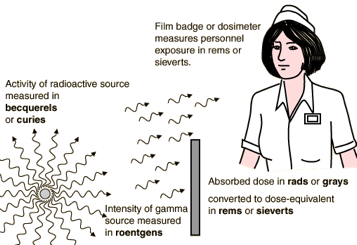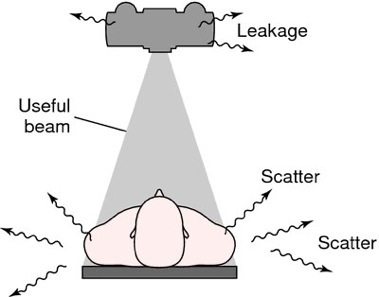hazards of x-ray exposure to health care workers










X-ray radiation is primarily directed in straight lines. Compared to other electromagnetic waves, they are relatively difficult to reflect. Despite this fact, some scattering of the x-rays does occur when they come into contact with an object such as a person having a radiograph taken. The hazards to health care professionals, such as x-ray technicians, primarily are a result of exposure to x-ray scatter over a career in health care.
x-ray radiation and health care professionals



hazards of prolonged exposure to x-rays
Large, acute doses of high energy radiation can result in death, at the worse, case or nausea, diarrhea, dermatitis, and rashes (erythema). Long term exposure can result in cancerous growth, decreased bone marrow production, or genetic birth defects in offspring.
precautions to minimize exposure to x-ray radiation for health care professionals
Direct barriers to x-ray radiation are often used by health care professionals. X-ray machines are located in rooms separate from other areas minimizing the number of people exposed to x-ray scatter. Many radiology departments have separate areas with a wall or window between the x-ray machine and the radiology technician.
Lead gowns and thyroid shields are often worn by radiology technicians to prevent exposure to x-ray scatter. Personal dosimeters are also used to measure the amount of exposure an individual receives while working in areas where they are chronically exposed to x-rays.
